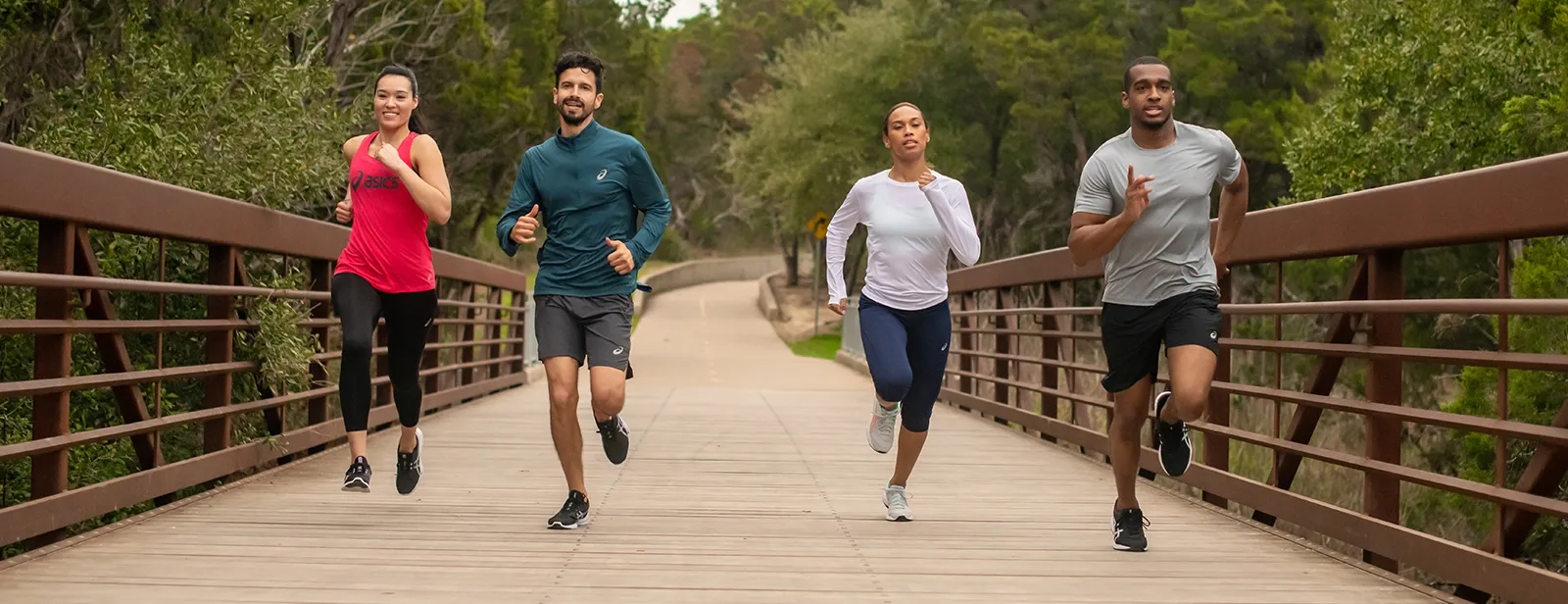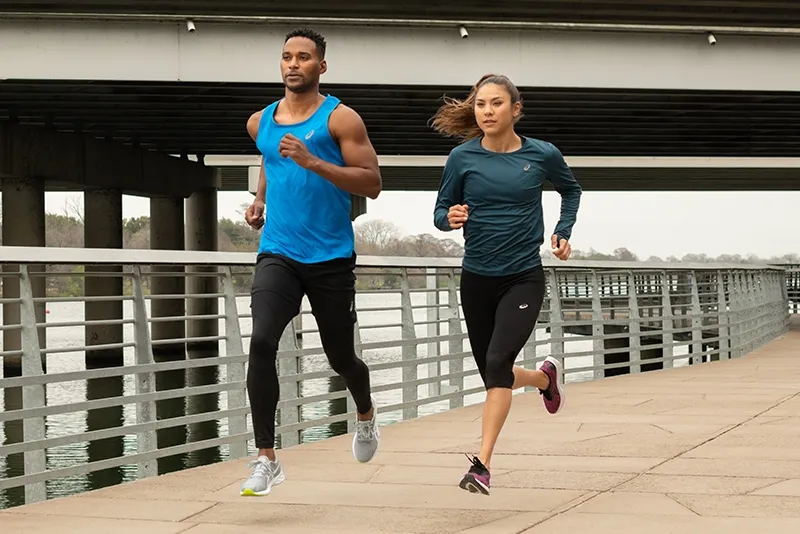
Form and How It Can Prevent Injury
April 15, 2021
Professional runners know that form is important to conserving energy in long-distance races and excelling past competitors in sprints.
But proper running form is also vital to preventing injuries that develop over time from using improper techniques. This is true for the casual jogger as well as the competitive racer.
A literature review published in the Journal of Orthopaedic and Sports Physical Therapy revealed that as many as 79 percent of runners sustain a running-related injury annually and that improper running form contributes to these injuries.
If you're experiencing injuries or pain in your back, hips, feet, knees, or legs, it's worth taking a look at your running form to see if it might be the culprit. And if you're a novice runner, follow these tips for good running form and learn how you can prevent injury.
Maintain Good Posture
Having your shoulders hunched and your head tilted down while running can strain your back and cause pain during and after your runs. This poor posture also makes it more difficult to breathe while you're running since your chest is more compressed.
Instead, run with your shoulders back and relaxed and your back upright. This may take some practice if it doesn't feel natural to you, but it's worth the effort in the long run. Since it's normal to get tense while running or let your posture sag as you fatigue, check your posture every five or 10 minutes. Shake out your arms to relieve tension, and raise your shoulders up to your ears then relax them again.

Keep a Stable Center of Gravity
An extension of maintaining good posture is keeping both your upper and lower body straight and parallel as you run. In essence, you're keeping a stable center of gravity over your feet, and you're not crossing the midline of your body. Here's what we mean:
Arms: As you run, your arms should be pumping straight back and forth, parallel to your body, not side to side in front of your body. Pick an angle to hold your arms, such as a 90-degree bend at your elbows, and maintain that. It helps to turn your hands slightly outward as you get used to this form, so you're less likely to swing your arms in front of your torso.
Hips: Like your arms, your hips and pelvis should not be twisting as you run. As long as your arms are not swinging in front of your torso, your hips are also less likely to rotate as well. Not only is this a more efficient way to run that conserves energy, but you'll also prevent undue pressure on your lower back and glutes.
Legs: Avoid overstriding. Reaching out with your legs far in front of your body puts too much pressure on your knees, shins, and other muscles and joints. It also causes you to lose energy as you push your foot into the ground and then try to come back up. Your center of gravity is pushed forward above your leading foot, which causes you to overcorrect on the next stride, inevitably causing twisting again in the pelvis.
Instead, maintain your center of gravity by keeping your hips above your feet and running with a straight, elongated spine. You can do this both when jogging and sprinting. Take a look at the best Olympic runners, and you'll see how they maintain a straight line from feet to head — with the possible exception of lunging over the finish line in a neck-and-neck race.
Feet: Some runners point their feet outward or inward when running. This causes both the knees and ankles to twist, and as you pound the pavement, extra stress is placed on these joints, leading to injuries and other issues. Pointing your feet inward can also cause your thighs to rub together or your knees to knock.
Proper foot orientation means pointing your feet forward so that they are parallel to each other as they hit the ground. If your feet naturally point inward or outward, teach them to straighten out by pointing your toes forward for short stretches of your run. Eventually, you'll train your feet to have proper running form and avoid unnecessary injuries.
Head: As with every other part of your body, keep your head positioned directly above your shoulders and hips, without tilting forward, back, or to the side. When you lean your head forward, stress is placed on both your neck and back muscles. Tilting your head back and to the side adds extra strain to your neck muscles. Exercises that strengthen your neck muscles and help you correct any imbalances will help you improve your running form if you find this to be an issue.
Land Midsole
Try to imagine yourself pedaling a bicycle as you're running. As you stride, place your foot on the ground and quickly pick it back up again. You have a spring in your step, as opposed to landing hard and then lifting your foot heavily to take the next stride. As your foot comes down, you should land midsole, then use the power of your Achilles tendon to spring back up. As you rotate your foot back, let it rise as high as the knee on your opposite leg. This prevents a lazy-footed approach to running and makes your strides more efficient and powerful.
Landing midsole also prevents joint injuries and other maladies like shin splints that are caused when runners land heel first. Heel striking is common to new runners but should be avoided, as it can lead to more knee, ankle, and foot injuries than landing on your midsole, according to a study of female athletes.
This proper running form also helps absorb the impact of your stride as your foot touches the ground. A lighter, springier stride goes a long way in helping to prevent injury to runners. Another study of female runners found that those who land more forcefully also report a higher incidence of injuries than those who land with less force.
Running with proper form may require some corrective measures, but the effort will help prevent running-related injuries and improve your time and overall performance. It may help to ask someone to video you while you run so you can assess your running form. As you pay attention to your posture, center of gravity, and landings, you'll adopt healthier running habits.